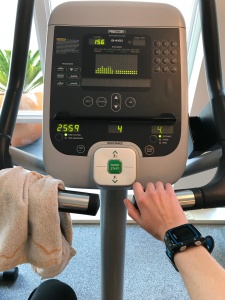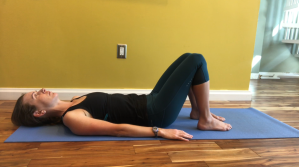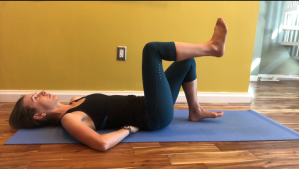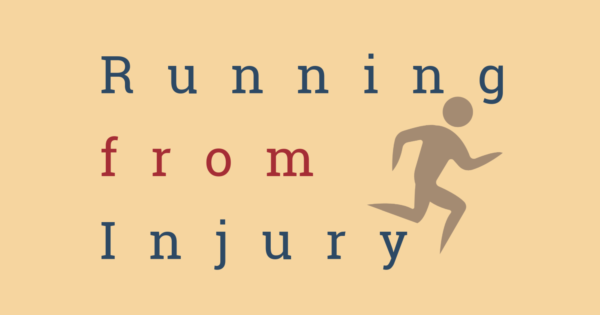I got sick this winter. Very sick. The short story is that I had a perforated appendix, and due to my doctors not being able to reach a consensus on what my exact diagnosis was, I did not have surgery to remove it until over two months later. During that time I did not do any exercise besides occasional walking. My abdominals were bloated to where I appeared to be 5-6 months pregnant. So in addition to not exercising, my abdominals were overstretched to where they underwent some damage.
This is not a story about my getting sick. If you want to more about my illness, you can read about it here.
This is a story of me getting better, and getting back to being the active person that I used to be.
As a physical therapist, I’m often guiding people through their rehabilitation after injuries and/or surgery. Interestingly enough, I had never had surgery before having my appendix removed. During my own rehab, I did my best to apply what I advise my patients to do to myself. By learning about how my body handles injury, illness, and recovery, I gained some insight into how people heal beyond what I experience while working with others in the clinic. In turn, this has changed that way that I practice.
With my own rehab, there are some factors that I believe made me successful and allowed me to return to running and the other activities that I do without injury. Some of these factors include strengthening exercises and slowly building up my activity level to help increase my fitness. Other factors include nutrition, sleep, and mental attitude. Since I am not a nutritionist, medical doctor, psychologist or exercise physiologist, some of these things go beyond the scope of my practice. While I can provide some evidence that supports my reasoning for doing what I did, please note that some of these other factors are not my area of expertise.
Since I have had years of experience in helping others to recover from injuries and surgeries on top of my own experience, I have a lot to say on the topic. In this post, I’ll give an overview of some of the principles that I have found to be effective for both my patients and myself. In subsequent posts, I will delve deeper into some of these topics.
Post-Op: Start slow
After my surgery, I had a lot of pain. Even though my surgical incisions were small (three, 5mm incisions), I had a lot of scar tissue in my abdomen. My surgeon had restricted me to lifting no more than 10 lbs. and had me off work for three weeks after my surgery.
During the first 2 weeks, I did not do much activity. Towards the end of the second week and during the third week after surgery, I started to walk every day. Since I was still having pain, my walking wasn’t very fast. My walking pace was determined by how I was feeling. I would choose walking routes that had park benches and other places where I could sit and rest if needed.

Towards the end of the third week after my surgery, I started to ride an exercise bike. I started riding the bike for 25-30 minutes at a time. This was exciting to me because it was the first time in months that I had broken an exercise-induced sweat. I also increased my time walking. Luckily for me, I had a pre-planned trip to the east coast where I ended up doing a LOT of walking. By the end of May (5 weeks after surgery), I was able to walk for over one hour at a time.
I finally started running again at the beginning on June (approximately 6 weeks after surgery). This run was pretty slow. I felt as though I was trotting along at the same pace that I would use for my walks. During this first run, I was monitoring my heart rate. I did not want my heart rate to get above a certain level (more on that later). When my heart rate got too high, I started walking until it went down a little. Then I would start to run again. In total, my walk/ run was around 3 miles.
Heart Rate Based Training
When running and biking, I use a heart rate monitor. Monitoring your heart rate can be a great tool to use in training. Your heart rate is specific to you, and it can tell a lot about what else is going on with your body. If you are fatigued, dehydrated, under stress, or coming down with an illness your heart rate will be higher than normal.
Instead of having target heart rate zones, I try to keep my heart rate at or below a certain level for most of my workouts. The formula that I use to determine the heart rate that I do not want to exceed is known as my Maximum Aerobic Function (MAF) heart rate. The formula that I use to determine my MAF heart rate is 180-age. The concept behind training at this level is that you are keeping most of your workouts aerobic and not putting undue stress on your body. As a result, you may be more likely to avoid injury and overtraining.
If you are training with this MAF formula and are fatigued, dehydrated, stressed, or ill, you will most likely get to your MAF heart rate by doing a less intense workout (which you should be doing anyway if you are fatigued, dehydrated, stressed or ill).
Once I felt confident running a track workout with other people, I started to allow myself to do one anaerobic workout a week. Even though I spend a lot of time doing aerobic workouts, I think that anaerobic workouts can be beneficial if done in moderation.
Strength
Since my abdominals were overstretched. I knew I had to strengthen them. I started with some very basic core exercises to help activate my deep abdominals (such as my transverse abdominis). These are the same types of exercises that I might do with people after a back injury or women who are postpartum.


I also did strength training with weights. Since I was only able to run at a very slow pace, weight training helped me to improve my pace within a short period of time. Resistance training is a great way for runners to build speed and explosiveness (i.e. what helps you to kick in order to pass people either during, or after a race). I could write a whole other article on resistance training for runners, and perhaps one day I will.
Nutrition
During my illness, I had time on my hands and read, “Roar” by Stacy Simms, Ph.D. In this book, she discusses nutrition for active women. Time and time again, she would talk about how women do not get enough protein in our diets. If you are a woman and are active, I highly recommend that you read her book.

I do not follow a particular type of diet, but during my recovery, I focused on getting more protein in my diet, as well as minimizing processed foods. While I am a meat eater, I didn’t necessarily make an effort to eat more meat as a means to boost my protein intake. Instead, I made sure to add protein from non-meat sources. Foods such as nuts, quinoa, green leafy vegetables, beans, and lentils are excellent sources of protein.
Since I had been on a lot of antibiotics and non-steroidal anti-inflammatory drugs (NSAID) for pain, I was afraid that my gut bacteria were not doing too well. So I also made sure to eat a lot of foods containing probiotics (a.k.a. good bacteria, like the kind that live in your gut). That meant I was eating yogurt, sauerkraut, kimchee, and drinking kombucha.
Sleep
Sleep is your body’s time to heal. After my surgery, I would sleep whenever I felt tired. In the weeks immediately after my surgery, I would sleep up to 10 hours a night. If you feel like you are constantly battling injuries despite doing all of the rehab exercises prescribed by your PT, you should examine your sleep and nutrition. Getting your muscles and soft tissues to be their strongest and healthiest is difficult if you are not fueling them properly and giving them time to repair.
Progress is not linear
While an aerobic base, strength training, sleep, and proper nutrition helped me to get my fitness back, my progress was not linear. In other words, I did not feel as though I was getting better with each workout. There were days when I felt as though my progression had stalled. There were days when I felt as though I was worse than I had been the previous week. There were days when I wanted to cry in the middle of my run and then walk home.
What helped me get past these slumps was tracking my progress. If you do not keep some type of training log, I highly suggest that you start. A training log can help you to identify past errors in your training so that you do not make the same mistake twice. It can also help you to figure out what type, and how much training is best for you.
For me, it helped to see how much I was running per week compared to previous weeks, what pace I was running on certain routes, and what my longest run was. Whenever I reached a milestone such as my longest run, or a run with the fastest average pace since my surgery I would fist pump the air, do a happy dance, skip, or do something else that was celebratory.
You will overdo it
In addition to having days where I felt bad while working out, I also had days where I felt great. In fact, I had days where I felt so good that I ended up doing more than I had planned. Then things backfired, and I was knocked back on my butt. One day, early into my rehab, I rode the exercise bike for 45 minutes. I was feeling good and decided to add some strength to my workout. So I did squats, and pull downs, and rows, planks, and Turkish get-ups (yes, but with very little weight!). I was very proud of myself…until later the following day. Severe abdominal pain similar to what I experienced after surgery started to creep in. While I was able to treat the rest of my patients that day, it was a struggle to drive home and finish my paperwork.
Listen to your body
You will have good days, and you will have bad days. You will have days where you feel like you have superpowers. You will also have days where you leave the house with two different types of shoes and make irrational demands of your significant other. The latter usually means that you should take a day off.
Keep in mind that in training, and rehab your goal is to place a stress on the body and then give it time to make adaptations and grow back stronger. My workout schedule usually contains rest days and easy days. However, every so often I realize that I am overly tired, cranky, and irritable. I usually take these moods as a sign that I need a little more rest and will take the day off from working out or significantly scale back my workout.
Rehab is a long road. I am still working towards achieving the level of fitness that I had before getting sick. Know that your rest, nutrition and attitude are as important as your exercises and workouts. A positive attitude and an understanding that every body and every life is different can also help.
